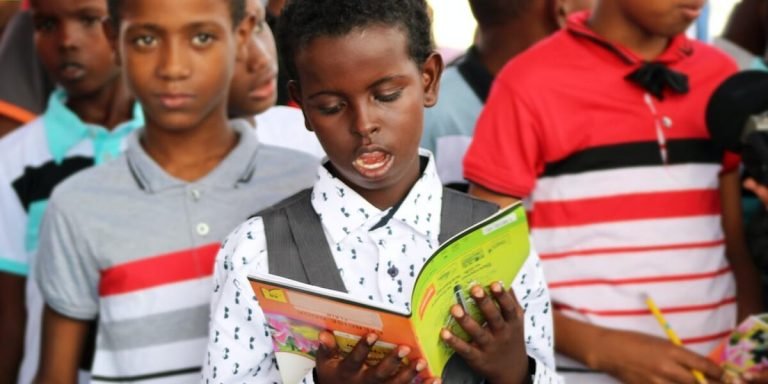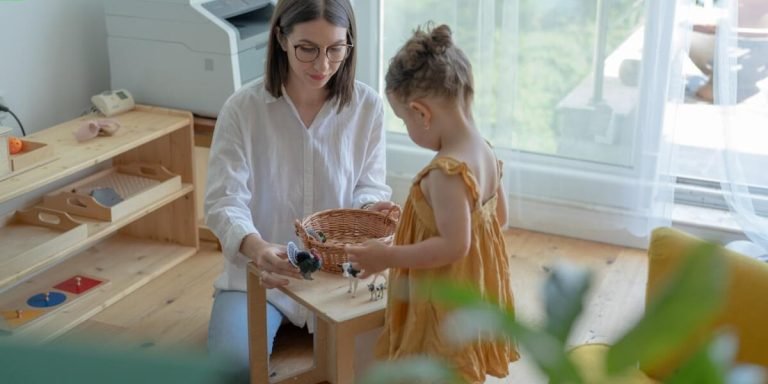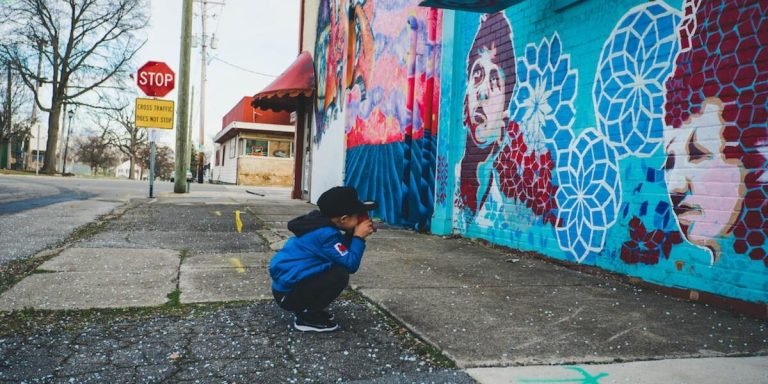7 Senses of the Body: An Insightful Journey into Child Development
Understanding the “7 senses of the body” plays a key role in child development, particularly for children who require special education resources and support. The human sensory system is an intricate network that helps us navigate our physical environment, affecting cognitive growth and shaping our behavioral responses from a very young age.
Diving deep into these seven senses isn’t just about biology or health lessons; it’s also crucial to understanding how diverse learning experiences can enhance educational outcomes. Children with specialized needs may experience their world differently through their senses which underlines the importance of educators needing to grasp this concept efficiently. With this knowledge at hand, fostering an effective learning environment becomes more achievable.
Did you know?
Contrary to the commonly known fact of humans having only 5 senses, scientists suggest that we have at least 7 sense faculties. This includes interoceptive and proprioceptive senses which help children understand their body’s internal cues and spatial awareness respectively.
Understanding the 7 Senses and Their Role in Special Education
The human body has always been known to possess five senses – sight, hearing, taste, touch and smell. However modern science has broadened that perception by acknowledging two additional ones – vestibular (concerning balance) and proprioception (relating to body awareness). These seven senses play a pivotal role in special education as they help children with different educational needs perceive the world around them more completely.
Furthermore auditory learners stand greatly benefited from podcasts or audio-based lessons catering specifically to their strong suit – hearing! Not only are these adapted tech-aids helping students learn better but also aiding them become more comfortable with their unique patterns of sensory reception.
Exploring Sensory Processing Issues in Children with Disabilities
Sensory processing issues are common in children with disabilities, significantly affecting their learning experience. These difficulties can hinder their interaction and understanding of the world around them. Our focus here is to delve into these concerns using the scope of seven senses.
The human body boasts an elaborate system consisting not just five but seven senses: sight, smell, taste, touch, hearing alongside two lesser-known ones – vestibular (balance) and proprioception (body awareness). Understanding this intricate web plays a crucial role when it comes to designing resources for special education.
Vision or sight helps us interpret colors and shapes while enabling perception about depth or distance. For some youngsters dealing with sensory integration problems though they may find bright lights bothering even leading to trouble following words on printed paper due to sensitivity-related issues.
Our sense of smell goes beyond merely distinguishing odors; it also impacts our taste buds influencing diet preferences among other things. Children battling sensory processing glitches could be either hypersensitive hence drawn towards certain smells yet repelled by others which seem normal otherwise.
Taste assists us in deciding what’s palatable enough being directly related to nutritional choices we make every day thus impacting overall health too eventually.
Touch signals temperature changes triggering pain responses besides delivering sensations from various textures that surround us constantly.
Strategies for Supporting Students Through Sensory Integration
The human body possesses seven senses – touch, sight, hearing, smell, taste, vestibular (balance), and proprioception (body awareness). These 7 senses of the body play an integral role in how we experience our surroundings.
Strategically using these to enhance instruction involves understanding each student’s unique sensory profile. Every child responds differently to stimuli; some may be hypersensitive while others could show hyposensitivity. Consequently, it’s critical that educators are equipped with a range of strategies to help navigate this intricate landscape.
Educational Tools Tailored to Enhance Sensory Development
Sensory development in children plays a crucial role in forming their understanding of the world around them. In this digital age, technology integration becomes pivotal to offer an enriching learning experience that kindles all seven senses of the body – sight, smell, sound, taste touch as well as vestibular and proprioception.
Technology has paved its way into education systems globally with innovative tools designed specifically for sensory enrichment. These educational tools are not just limited to visual or auditory sense development but also cater to stimulate other less-talked about senses like proprioception which involves awareness about one’s own bodily movements and positioning.
In relation to special education resources and support mechanisms available today, these tech-enabled teaching aids have proven invaluable. For example: texture panels for tactile exploration can now be replicated virtually through haptic feedback gadgets; 3D modeling software helps explain complex concepts visually by appealing directly to our spatial intelligence without neglecting those who might struggle due to specific sensory impairments such as dyslexia or color blindness.
Our accessibly designed classrooms resonate with compassion catering both inclusivity and personalization making use of advancements from assistive technology devices up till Augmented reality (AR) applications on smartphones. Teachers today are leveraging cutting-edge technologies offering multisensory experiences enhancing learners’ engagement while reinforcing vital skills essential for growth.
Utilizing Multi-Sensory Resources for Effective Learning
What makes these strategies stand out is their integration into our current technological landscape. The combination of modern tech aids with traditional teaching methods offers children an unprecedented learning experience that caters precisely to their individual needs.
One example we see today includes interactive whiteboards or tablets integrated within classrooms which deliver audio-visual stimuli concurrently. Such devices not only cater to visual learners but also appeal greatly auditory learners by encompassing sounds related content delivery thus addressing two senses at once.
Virtual reality technologies offer another fantastic avenue for sensory training aiming primarily towards balance or vestibular sense along with spatial awareness ability through simulated environments providing real-time feedback on movements made by pupils enhancing both coordination and comprehension skills significantly.
Another set encompasses tactile elements quite literally leveraging touch screens alongside tangible objects enabling kinesthetic process stimulation aimed directly at grasping complex concepts more concretely from geometry lessons using block figures up till foreign language instructions incorporating Braille letters thereby nurturing cognitive processes fundamentally while expanding comfort zones progressively yet healthily.
Adaptive Equipment to Aid Students with Sensory Challenges
Recognizing and addressing the sensory needs of children is crucial in their learning journey. This becomes especially significant when we consider students with sensory challenges, who require specific conditions to be able to engage fully in the educational process. It’s here that adaptive equipment steps up; presenting an innovative intervention technique tailored to enhance various senses involved in a child’s development.
A variety of tools are available on the market today designed specifically for this purpose. They cater not only to what you might traditionally think as ‘the five senses’ but remarkably also incorporate two additional aspects: vestibular (sense of balance) and proprioceptive (external stimuli perception). These seven vital senses help shape how a student perceives, interacts with, and learns from her surroundings.
For instance, technology like auditory trainers can enhance hearing sensitivity while decreasing background noise distraction – perfect for those struggling with listening or concentration issues due largely to excessive environmental interruptions. Fidget widgets offer tactile stimulation directly aiding focus enhancement which proves beneficial particularly during long duration tasks requiring extensive sitting periods or intense sessions demanding high levels cognitive engagement.
When it comes visual aids – light tables provide exciting ways transform ordinary lessons into dynamic interactive experiences enabling better grasp complex topics even among visually challenged learners! Interactive touch screens place control literally at your fingertips offering endless possibilities immersive multimedia content consumption adaptable according individual learner requirements abilities ensuring every student feels included part classroom experience regardless limitations they might face otherwise!
Collaborative Approaches to Reinforce 7 Senses Stimulation
In today’s digital age, educators and parents are exploring innovative ways to stimulate the 7 senses of children. They’re employing technology as a collaborative approach in education methods for an enriching learning experience that capitalizes on sensory stimulation. Notably, our understanding of these seven senses—touch, sight, hearing, taste smell, vestibular (balance) and proprioception (body awareness)—is evolving due to revolutionary advancements in educational technologies.
Technology provides interactive platforms through Virtual Reality (VR), Augmented Reality(AR), artificial intelligence(AI) programs and gamification that provide multisensory experiences for learners. For instance; VR can take children on virtual tours where they can see historical landmarks or dive under the sea to explore aquatic life—all while sitting inside their classrooms or homes! This not only stimulates visual perception but also helps develop spatial orientation abilities by providing them with three-dimensional perspectives often inaccessible otherwise.
Moreover AI reinforces auditory sense enhancement via applications which use sound recognition patterns helping youngsters tune into different tonalities bettering communication skills. Similarly touch is enhanced using haptic feedback gadgets allowing kids know how it feels touching different materials virtually!
On top of this integration process there exists special resources created specifically aiding teachers dealing special-needs students as well routines crafted encourage overall development all types folks irrespective individual capabilities limitations heightening inclusivity scope mainstream academia further making world better place every learner out there.
The Importance of Parent-Teacher Partnerships in Developing Sensory Skills
The 7 senses of the body form an integral part of a child’s development. They’re like building blocks, each one establishing an essential foundation for cognitive growth and learning. As parents and educators, our role in nurturing these sensorial skills cannot be overemphasized or overlooked.
In this digital era where technology reigns supreme, we find ourselves living in two worlds—the physical world where sensory experiences rule real-time interactions; and the virtual realm that thrives on artificial intelligence (AI), augmented reality (AR) and other advanced platforms which stimulate interactive learning among children. The fusion of these innovative technologies with traditional teaching methods creates a more dynamic approach to childhood education.
Parent-teacher partnerships have always been critical across all educational spheres but they play an especially pivotal role when it comes to developing sensory skills through strategic technological integrations. Strong collaborative approaches between home and school can significantly reinforce early stimulation initiatives for engaging all seven senses—touch, taste, smell, hearing sight as well as vestibular sense of balance/movement) propiroceptive awareness (sense of self-movesment/position).
Let’s delve into why parent-teacher collaboration is crucial:
Community-Based Programs That Support Sensory Integration Therapy
In recent years we’ve seen increased attention towards community-based programs that focus on these areas. These programs have adapted by integrating technology into their teaching methods following COVID-19 lockdowns serving as an excellent resource for special education.
A well-known example is virtual reality (VR) sensory rooms; they offer immersive experiences designed to stimulate various senses. They’re customizable according to the child’s specific needs ensuring tailored therapeutic benefits promoting curiosity and comfort while practicing social abilities.
Digital storytelling platforms are another innovation facilitating playful learning through interactive stories empowering children with control over actions within the story thereby stimulating cognitive faculties coupled with auditory or visual stimulations.
Conclusion
In sum, we’ve navigated through the fascinating journey of child development employing the 7 senses of the body. We have seen how each sense acts as a building block in a child’s learning process and overall growth. Through this enlightenment it becomes apparent; fostering these senses from early on is truly instrumental for every youngster’s holistic development.
Remember, understanding your little one’s sensory world plays an integral role in shaping them into balanced individuals ready to take on life’s endeavors head-on. Our website stands as your partner dedicated to providing resources that bridge gaps between initial curiosity and effective knowledge acquisition about childhood education.
Continue exploring our pages teeming with guides, articles, tips and more – all aimed at better educating children while also offering invaluable support exclusively designed for parents & educators alike! Happy browsing!







